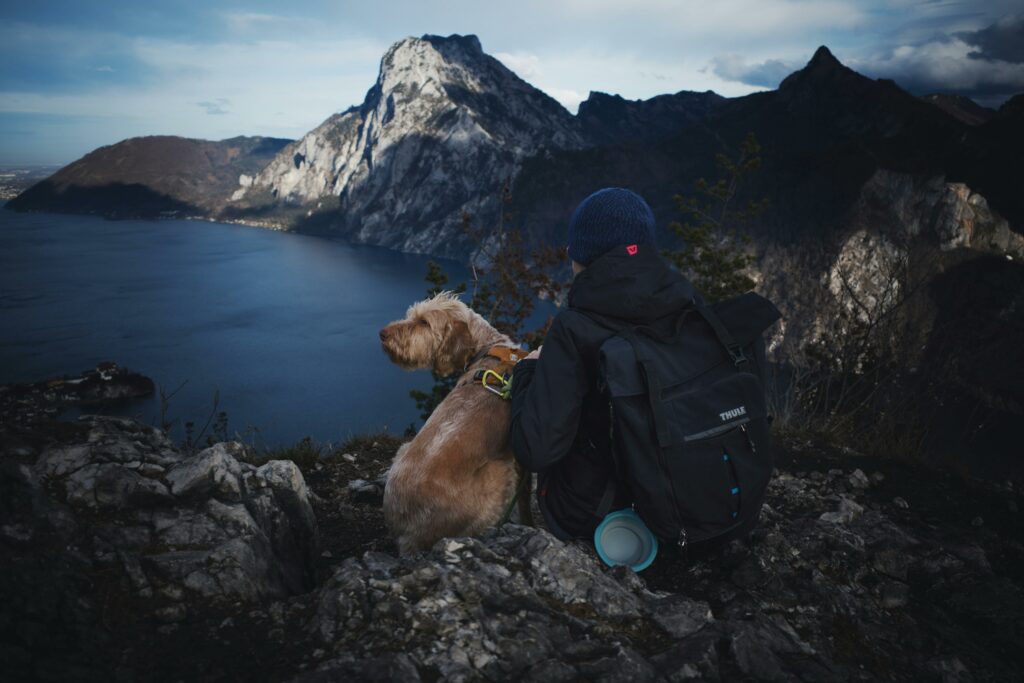Keeping your fur baby fit and active is essential for their overall health and well-being. Keeping them fit means maintaining a healthy weight to strengthen muscles and joints, improve cardiovascular health, boost overall fitness levels, and prevent obesity, which can lead to various health issues.
However, it is not all about physical health. Spending time with your pet is crucial for building a strong bond, ensuring their overall well-being, and enhancing their quality of life.
Here are some ways to ensure your furry friend stays in good shape:
Regular Exercise
Just like humans, dogs need regular exercise to stay fit. Take your dog for daily walks, jogs, or hikes. The amount of exercise needed varies depending on the breed, age, and health condition of your dog, so consult with your veterinarian to determine the appropriate amount.
Dog Sports
There is a wide variety of dog sports to choose from, catering to different interests, abilities, and energy levels. Some popular dog sports include agility, obedience, flyball, dock diving, rally obedience, disc dog (frisbee), herding trials, lure coursing, and tracking.
Consider enrolling your dog in sports like agility training, flyball, or obedience competitions. These activities provide mental stimulation along with physical exercise, keeping your dog both fit and engaged.
However, not all dogs are suited for every type of sport. Consider your dog’s breed, size, energy level, and temperament when choosing a sport. For example, high-energy breeds like Border Collies excel in activities like agility and flyball, while scent hounds may enjoy tracking or nose work.
Swimming
If your dog enjoys water, swimming is an excellent low-impact exercise that works out their entire body. Swimming is particularly beneficial for dogs with joint issues or those recovering from injuries. Teaching your dog how to swim can be a fun and rewarding experience, but it’s important to approach it safely and patiently. Here are some key tips to keep in mind:
- Start Slowly: Introduce your dog to water gradually, starting with shallow areas where they can wade and gradually progress to deeper water. Let them explore at their own pace and never force them into the water if they seem hesitant or fearful.
- Use Positive Reinforcement: Encourage your dog with treats, toys, and plenty of praise to create positive associations with water. Make the experience enjoyable and rewarding for them.
- Support and Supervision: Always provide support and supervision while teaching your dog to swim. Stay close by to assist them if needed and be ready to offer a helping hand or guidance.
Dog Parks
Take your dog to a local dog park where they can socialize with other dogs and run around freely. This provides mental stimulation and allows them to burn off excess energy in a safe environment. However, there are several important factors to consider before bringing your dog to one:
- Know Your Dog: Understand your dog’s temperament, behavior, and socialization skills before taking them to a dog park. Some dogs may not enjoy or thrive in a busy, off-leash environment, while others may benefit greatly from the social interaction.
- Health and Vaccinations: Make sure your dog is up-to-date on vaccinations, flea and tick prevention, and is in good overall health before visiting a dog park. This helps prevent the spread of diseases and parasites among dogs.
- Bring Water and Toys: Bring water for your dog to drink, especially on hot days, as well as toys or balls for them to play with. Avoid bringing toys that could cause conflicts or possessiveness among dogs.
- Know When to Leave: If your dog becomes stressed, overwhelmed, or overly excited, it’s okay to leave the park and try again another time. Pay attention to your dog’s cues and prioritize their well-being.
Obstacle Courses
Set up obstacle courses in your backyard or indoor space using tunnels, hurdles, and ramps. Guide your dog through the course, rewarding them with treats and praise for completing each obstacle.
Hiking
Explore nature trails with your dog. Hiking not only provides physical exercise but also allows your dog to experience new sights, sounds, and smells, keeping them mentally stimulated. Here are several important considerations to keep in mind to ensure a safe and enjoyable outing:
- Choose Dog-Friendly Trails: Not all hiking trails are suitable for dogs. Choose trails that allow dogs and are appropriate for your dog’s fitness level, age, and any specific needs or limitations they may have.
- Check Trail Regulations: Before heading out, research and familiarize yourself with any rules or regulations specific to the trail you plan to hike. Some trails may have leash requirements, restrictions on dog access, or other guidelines to follow.
- Prepare Adequate Supplies: Bring plenty of water for both you and your dog, as well as collapsible bowls for drinking. Also, pack snacks or treats to keep your dog energized during the hike. Consider carrying a canine first aid kit with essentials such as bandages, antiseptic wipes, and tweezers for removing ticks or splinters.
Training Sessions
Incorporate obedience training into your dog’s daily routine. Teaching them new commands and tricks not only stimulates their mind but also strengthens the bond between you and your pet. Here are some key points to keep in mind when planning and conducting training sessions:
- Start with Basic Commands: Begin with basic commands such as sit, stay, come, and down. These commands form the foundation of obedience training and are useful in everyday situations.
- One Command at a Time: Focus on teaching one command at a time and gradually add complexity as your dog progresses. Be patient and repeat the command consistently until your dog understands what is expected.
- Be Patient and Positive: Training takes time and patience, so be patient with your dog and celebrate their successes, no matter how small. Stay calm and positive, even if your dog makes mistakes or struggles with certain commands.
Conclusion
Remember to always consider your dog’s individual needs, preferences, and limitations when planning their exercise routine. Additionally, be mindful of weather conditions and avoid exercising your dog during extreme heat or cold. Lastly, regular veterinary check-ups are important to monitor your dog’s health and ensure they are fit for physical activity.













